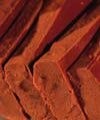Chinese sweets market recovers from melamine scandal
Pastilles, gums, jellies and chews remained the most dynamic category within sugar confectionery last year, reports analyst Francisco Redruello, with the segment growing 8 per cent in retail value sales, due in part to variety in packaging design and flavours.
He notes that the Frutips brand, launched by Nestlé China in 2008, contain eight different flavours including mango and litchi.
“With the melamine contamination scandal fading away, as well as the country's economic recovery, both retail value and volume growth were slightly faster than in the previous year,” said the analyst.
The industrial chemical melamine was detected in the milk based White Rabbit brand of Chinese sweets during the 2008 contamination scandal.
Gum remains dynamic
Sugar-free gum is also achieving strong growth in that market, as Chinese consumers there become more health conscious, and higher disposable incomes among the middle-class allows them to eat snacks with indulgent as well as functional properties.
Last year, retail volume and value sales for sugar free gum increased by 7 and 6 per cent respectively, said Redruello.
The category in China is dominated by two global brands, Extra and Mentos, with the latter experiencing impressive growth in 2009 due to its unique packaging and cube shape, he continued.
Many leading gum makers have been stressing the health benefits of the ingredient Xylitol to Chinese consumers, either on the packaging or through advertising, said Redruello.
Dark chocolate makes strides
Dark chocolate also recorded strong growth in 2010 due to its health-related benefits, with its lower fat content particularly favoured by female consumers, remarked the analyst.
Mars China and Ferrero China launched Dove Xinshui dark chocolate and Ferrero Rocher Lang Mu respectively in late 2009 and 2010, notes Redruello.
“In contrast with the rapid growth of dark chocolate, plain white chocolate declined in 2009 and 2010, mainly thanks to its relatively high fat content,” added the confectionery market specialist.




